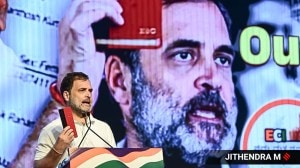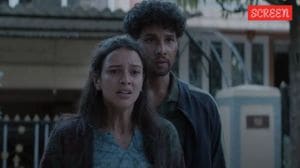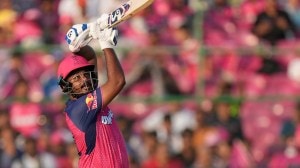Unsung Heroes: Into medical clowning, this Bengaluru theatre group is serious about making people laugh
After some initial hesitation in venturing into medical clowning, which involves trained performers who engage in various routines to help cheer up patients, Bhandutva has slowly found more takers in Bengaluru. Now its members find the acts therapeutic for themselves too.
 The team of eight artistes specialises in clowning, especially medical clowning, to aid patients in their healing process and to lighten the mood among hospital staff (Pic credits: Express Photo Sanath Prasad)
The team of eight artistes specialises in clowning, especially medical clowning, to aid patients in their healing process and to lighten the mood among hospital staff (Pic credits: Express Photo Sanath Prasad) Laughter may be a simple expression of amusement, but making a person laugh is by no means an easy feat. Recognising the benefits of laughter as a natural healing therapy, Bengaluru-based theatre group Bhandutva has taken up the onerous task of tickling the funny bones of city folk, particularly those in hospitals. And they are serious about it.
The team of eight artistes specialises in clowning, especially medical clowning, to aid patients in their healing process and to lighten the mood among hospital staff. Founded by Pritesh Bhandary, 35, Siddharth Khanted, 28, Darshan Jain, 32, and Paul Vannan, 32, the group actually started out as a production for a play centred around clowning in August 2022. However, as destiny had it, they began to explore the different facets of clowning and started performing in public places across Bengaluru.
 Bhandutva’s motto is simple – make people laugh
Bhandutva’s motto is simple – make people laugh
Although the definition of clowning is subjective in nature, it usually means to behave or perform in a comical way so as to generate emotions and reactions among the audience. Medical clowning – popular in several countries – goes a step further and involves trained performers who engage in various acts or routines to help cheer up people under medical treatment, especially in hospital settings.
Stuttering start
Bhandutva’s motto is simple – make people laugh. However, things really did not really swing their way at first. “We were actually depressed after we failed in clowning. We could not make people laugh. It hurt us deeply and that is when we learnt to take rejections. However, two months later in Lalbagh, when we faced a similar response, being in character, we all started crying out loud. That is when people cracked up,” says Bhandary.
“A clown is someone who generates interest or some sort of curiosity in the audience. Our goal is to generate laughter because people are going through tough situations every day and no one has a happy face. I was going through depression myself when I was clowning. But the art form helped me heal which is exactly what we want other people to experience.”
 As part of medical clowning, the squad engaged with patients in different hospitals, including differently abled individuals.
As part of medical clowning, the squad engaged with patients in different hospitals, including differently abled individuals.
The group works on different ‘clowning’ situations reflecting real-life instances and scenarios. While 90 per cent of the act is improvisation, the group also scripts and rehearses different situations. Over time, the team has visited orphanages in Bengaluru and performed clowning to cheer up kids. “It is always tough to make a child laugh. In this case, most of them are socially and economically backward which is more challenging,” Bhandary adds. The group usually performs in public places like Lal Bagh, Cubbon Park, Church Street, MG Road and Trinity.
Switching up to medical clowning
It was in December 2022 that they slowly ventured into medical clowning after receiving good feedback from the audience. The group first performed in Manipal Hospital in HAL and their other branches. Later they did the same at a government hospital and at a local hospital in Marathahalli in a bid to ease the ‘hospital mood’ and help patients recover faster.
As part of medical clowning, the squad engaged with patients in different hospitals, including differently abled individuals. “Medical clowning does not mean we always perform. There are times when we just sit next to the person, read a book for them, rub their hair or just be with them or talk to them,” Bhandary explains.
“It is not just about patients. Medical clowning also involves engaging with nurses. They are equally exhausted and stressed out while dealing with several patients and have no entertainment in their lives. We sometimes impersonate a doctor too,” says Darshan Jain, who is an event planner. Their ‘clown bags’, consisting of props and costumes, are an important part of the group’s act, be it in general wards, outpatient departments or wards.
Introducing the idea
“Initially we found it difficult to approach hospitals for medical clowning. Most hospitals did not know what it meant. We did not know whom to talk to and some of the emails we sent went unanswered,” Jain recalls.
Generally, the group performs medical clowning during the weekends while the artistes also do solo gags voluntarily. “Although we are all pre-occupied with our professional work, we take out time to do medical clowning because it acts like therapy for us too,” Jain points out.
Adds Paul Vannan, “For the last eight months it’s been a routine to wake up as early as 6 am and rehearse. There are also intense physical training sessions we undergo for clowning. We have also been chased out of many public parks and spaces during rehearsals because people don’t understand the essence of clowning. They feel a little hostile.”
Some of the clowning acts include fight sequences, dancing, tripping over fellow performers’ acts, medical emergency situations, making things complicated, putting people in uncomfortable situations, magic and other ‘500’ types of scenarios. Siddharth Khanted, who is a marketing and advertising professional, says, “Although we weave humour into our acts, we draw the line when it comes to sensitive subjects like gender, religion and politics. We perform clowning acts to which people can connect.”
The group now plans to charge for their acts in hospitals, but will continue to perform for free at orphanages and old age homes which they say gives them “pleasure” and “peaceful sleep”.













